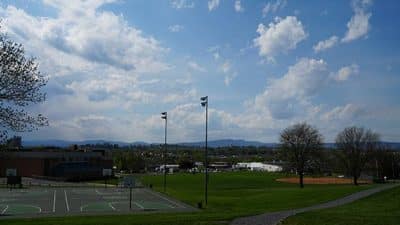 A joint proposal submitted by the James River Association and Chesapeake Conservancy will receive funding from the National Fish and Wildlife Foundation to reduce sediment and nutrient runoff to improve water quality in the James River watershed as part of the Envision the James initiative. This work will help facilitate the goals outlined in the 2014 Chesapeake Bay Watershed agreement, which call for a 60% nutrient and sediment pollution load reduction by 2017.
A joint proposal submitted by the James River Association and Chesapeake Conservancy will receive funding from the National Fish and Wildlife Foundation to reduce sediment and nutrient runoff to improve water quality in the James River watershed as part of the Envision the James initiative. This work will help facilitate the goals outlined in the 2014 Chesapeake Bay Watershed agreement, which call for a 60% nutrient and sediment pollution load reduction by 2017.
Funding in the amount of almost $500,000 over three years will allow the ETJ partnership to work with Soil and Water Conservation Districts (SWCD) in Virginia to identify where sediment reduction practices can make the greatest difference and then implement cost-effective projects that achieve maximum sediment reductions.
Community outreach efforts by the ETJ partnership revealed a desire for improved water quality in the James River watershed. The development of a riparian (streamside) buffer program on private lands addresses two of the major contributors to pollution in the James River watershed: sedimentation and nutrient runoff. Agriculture is the largest source of sediment with the majority of it being privately owned making technical and financial assistance critical.
“Sediment pollution is one the greatest challenges to the James River affecting everything from mountain trout streams to underwater grass beds in Hampton Roads,” said Bill Street, CEO for the James River Association. “Thanks to National Fish and Wildlife Foundation’s support, this initiative will allow us to use the latest technology to map out where we can make the greatest impact while implementing the most cost effective projects to improve local streams as well as the entire James River.”
“Riparian buffers play a large role in pollution reduction, stream health, and providing vital wildlife habitat corridors,” Chesapeake Conservancy President and CEO, Joel Dunn said. “They enhance in-stream fish habitat by filtering out pollutants, providing food and shelter, and aiding in temperature control for healthy aquatic ecosystems. With National Fish and Wildlife Foundation’s support, we are seeking to augment existing programs to increase the pace and effectiveness of riparian buffer pollution reduction.”
This project will increase riparian buffer coverage in priority locations within the SWCDs, install fences to prevent damage to stream banks, and reduce pollution in the water caused by livestock. Through this grant, the Conservancy will work to develop and implement a replicative methodology for assessing buffer coverage for future projects in other watersheds.
Outreach staff from the SWCDs, JRA, and the Conservancy will advertise these reduction programs and practices to landowners within each of the selected Districts. The use of the Conservancy’s high-resolution data will help guide the outreach process by helping to identify and prioritize areas of greatest buffer need. Landowners within these high-need areas will be informed of the opportunity to participate in these reduction programs through mailings, community and personal meetings, and/or site visits.
Following the completion of this project, the partnership will host a Sediment Summit, a forum which will provide SWCDs, JRA, the Conservancy, and other relevant groups with the opportunity to share information on reduction programs and work to develop new partnerships to address further sediment reduction work throughout their collective region.










